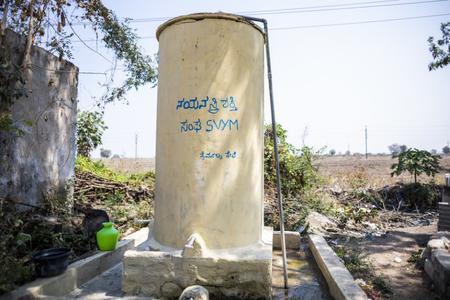Plugging the hole of distress

In Karnataka’s Deosugur village, until about three months back, if you didn’t have a bike, access to water would be very difficult. Explaining this strange correlation, 35-year-old Anitha said that the private vendors from which they would buy water cans from were at a distance from the village. “Hence, carrying those heavy cans of water was done on scooters and bikes,” she said, “But most people did not have any vehicle and so accessing water was a physically challenging task.” Anitha’s husband had a bike but this did not mean that their lives were devoid of problems. Water, after all, could be brought in a limited quantity and it would run out, making Anitha compromise on hygiene and live in discomfort.
It’s not that Deosugur in the Raichur district of the state had no water supply in the village. There was a water tank, but “it had so many leakages” that the water would often dry up completely during summers. Moreover, the leakages also led to water flowing out continuously and accumulating in puddles near people’s houses, like that of Anitha’s. “This would lead to the breeding of mosquitoes and make the place stink,” she said.
Thus, people would often resort to buying water from private vendors instead.
“Even then there have been so many times when I have not had a bath because there was no water in the house,” Anitha shared. This was because, with five members in the family, the five pots of water that they would get from the vendor would often be insufficient.
Things have now changed. With WaterAid’s intervention, the community in Deosugur was made aware of the importance of WASH (water, sanitation, and hygiene) to health. Encouraged to do something about the water tank, the women in the village Self Help Group, therefore, took it upon themselves to restore the tank. “Each of us in the group contributed INR 200 for the restoration work. With this money, and an additional loan of INR 5000, the water tank was repaired,” Anitha said.
Once restored, people began to access water from the tank with more ease. No more extra expenditure or effort in collecting water from a distance—water was now within their reach and means. According to Anitha, 15-20 households have been using the tank’s water for the past three months since its repair. “Even in summers, when there is water shortage, water will be available in the tank for at least four-five days easily, for 50 people,” she said, “No leakage, no more worry.”






